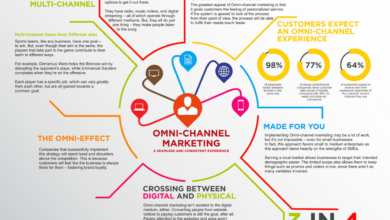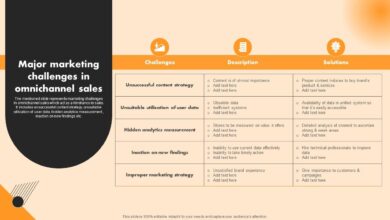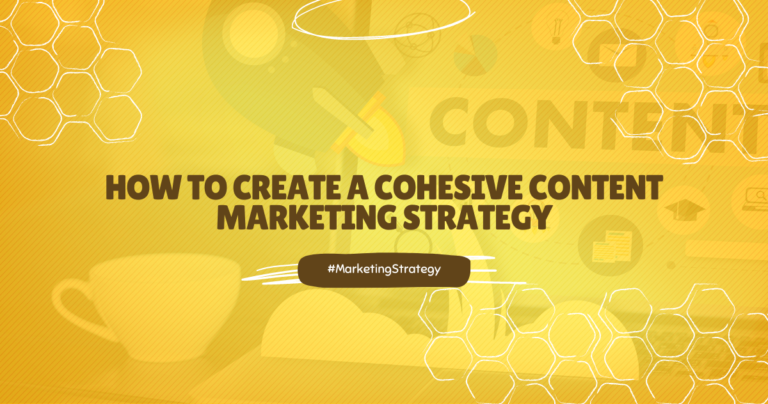
Five Timeless Principles to Content Marketing Mastery
Five timeless principles to content marketing mastery: Unlocking the secrets to creating, distributing, and optimizing content that resonates with your audience and drives real results. This isn’t just about writing blog posts; it’s about understanding your audience deeply, crafting compelling narratives, strategically distributing your content, meticulously measuring its impact, and building a sustainable content engine that keeps on giving.
We’ll explore each principle, providing actionable strategies you can implement immediately to elevate your content marketing game.
This journey to content marketing mastery starts with a solid understanding of your audience. We’ll delve into creating detailed buyer personas, analyzing their online behavior, and tailoring your content to their specific needs and preferences. Then, we’ll move on to crafting compelling content that grabs attention and delivers value, exploring different content formats and distribution strategies. Finally, we’ll examine how to measure success, optimize your efforts, and build a sustainable content strategy for long-term growth.
Understanding Your Audience
Content marketing isn’t about shouting into the void; it’s about having a conversation with the right people. Understanding your audience is the cornerstone of successful content creation. Without knowing who you’re talking to, your message will fall flat, no matter how brilliant the writing. This section delves into the crucial process of identifying, analyzing, and tailoring your content to resonate with your ideal customer.
Effective content marketing requires a deep understanding of your target audience, going beyond simple demographics. This involves identifying their needs, motivations, and online behavior to craft compelling content that speaks directly to them.
Key Characteristics of Ideal Customer Persona
Defining your ideal customer persona involves pinpointing the key characteristics that make them unique. These characteristics help you focus your efforts and resources on the most promising audience segments.
- Profession: Marketing Manager or equivalent roles within mid-sized B2B companies.
- Goals: Improving marketing ROI, increasing brand awareness, and generating qualified leads.
- Frustrations: Lack of time, difficulty measuring marketing effectiveness, and keeping up with industry trends.
Typical Online Behavior of Target Audience
Understanding how your target audience interacts online is vital for reaching them effectively. This includes the platforms they use, the type of content they consume, and their preferred communication styles.
Our target audience, Marketing Managers in mid-sized B2B companies, are highly active on professional networking sites like LinkedIn. They regularly read industry blogs, white papers, and case studies. They are less likely to engage with highly visual content, preferring data-driven insights and practical advice. They are also more likely to consume content during their workday, preferring concise and easily digestible formats.
Buyer Persona Profile, Five timeless principles to content marketing mastery
A comprehensive buyer persona profile combines demographic, psychographic, and behavioral data to create a holistic picture of your ideal customer. This profile serves as a guide for all your content creation efforts.
Name: Sarah Miller
Age: 35-45
Occupation: Marketing Manager
Company Size: 100-500 employees
Industry: Technology
Goals: Drive revenue growth, increase brand visibility, improve lead generation.
Pain Points: Limited marketing budget, difficulty measuring ROI, staying ahead of the competition, lack of time to implement new strategies.
Online Behavior: Actively uses LinkedIn, reads industry blogs and white papers, attends webinars, downloads case studies.
Tech Savvy: High
Comparison of Audience Segments and Content Preferences
Different audience segments may have distinct content preferences. Analyzing these differences allows for targeted content creation, maximizing engagement and conversion rates.
| Audience Segment | Preferred Content Formats | Content Topics | Platforms |
|---|---|---|---|
| Marketing Managers (B2B) | Case studies, white papers, webinars, data-driven reports | ROI optimization, lead generation strategies, industry trends | LinkedIn, industry websites, email newsletters |
| Marketing Executives (B2B) | Executive summaries, high-level overviews, thought leadership articles | Strategic planning, market analysis, future trends | LinkedIn, industry conferences, podcasts |
| Small Business Owners (B2C) | Blog posts, infographics, short videos, social media updates | Marketing tips, customer acquisition, brand building | Instagram, Facebook, YouTube, blogs |
Crafting Compelling Content
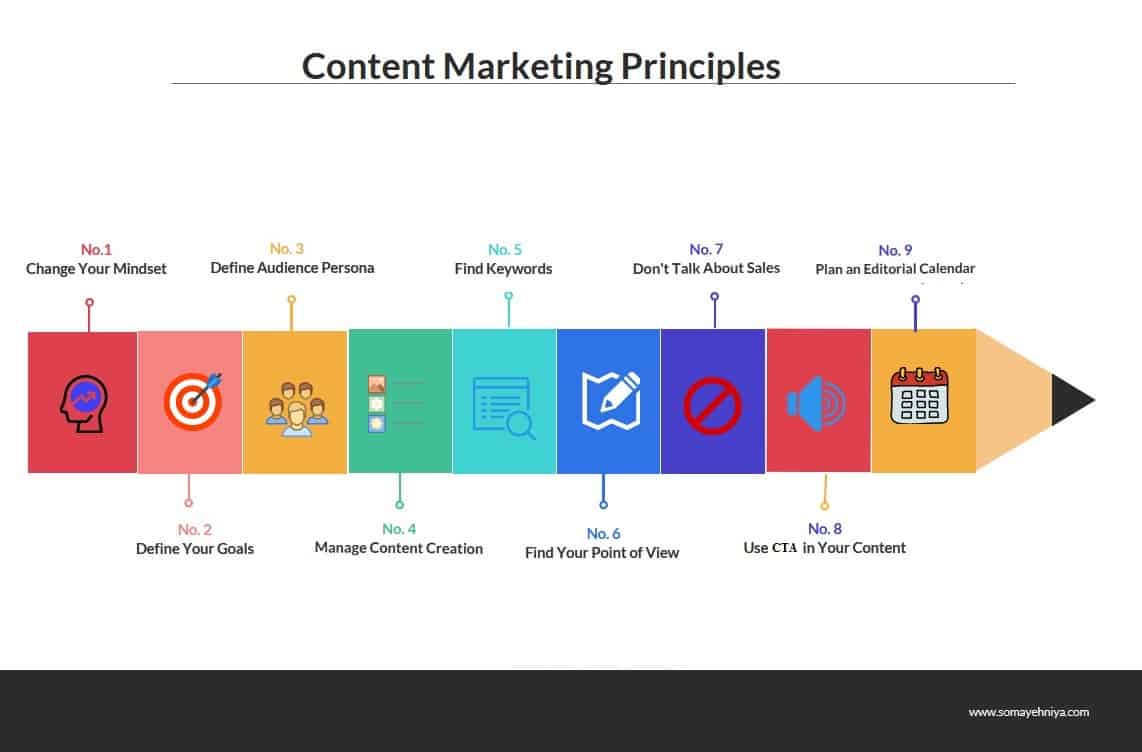
Creating content that resonates with your audience isn’t about throwing words on a page; it’s about understanding their needs and crafting a message that speaks directly to them. This involves strategic planning, compelling writing, and adaptability across different formats. The goal is to create content so engaging that your audience not only reads or watches but also shares and interacts.
Content Ideas Based on Audience Needs
Understanding your audience’s pain points, aspirations, and interests is crucial for generating relevant content. Ignoring this fundamental aspect leads to content that falls flat. Here are five unique content ideas based on a hypothetical audience of small business owners struggling with online marketing:
- A case study showcasing a small business that successfully implemented a specific marketing strategy, highlighting the results and lessons learned.
- A checklist of actionable steps for improving social media engagement, tailored to the specific challenges faced by small business owners.
- A downloadable template for creating a simple, yet effective marketing plan, providing a structured approach to their efforts.
- An interview with a successful entrepreneur who shares their journey and marketing insights, offering relatable advice.
- A blog post comparing different affordable marketing tools, outlining their pros and cons to help businesses make informed decisions.
Attention-Grabbing Headlines
Headlines are the first impression; they need to be concise, captivating, and accurately reflect the content’s value. Weak headlines lead to low click-through rates. Here are three examples of headlines designed to attract small business owners:
- “Stop Wasting Money on Ads! Three Proven Strategies for Small Business Marketing Success”
- “Unlock Your Business’s Potential: A Simple Marketing Plan You Can Implement Today”
- “From Zero to Hero: Learn How This Small Business Achieved 200% Growth in Six Months”
Writing a Compelling Introduction
The introduction is your hook. It needs to grab the reader’s attention within the first few seconds or sentences, establishing relevance and setting the tone for the rest of the content. An effective introduction immediately addresses the reader’s needs or pain points, promising a solution or valuable insight. For example, an introduction could begin with a compelling statistic, a relatable anecdote, or a provocative question.
A strong introduction immediately establishes trust and keeps the reader engaged.
Adaptable Content Formats
Effective content marketing involves delivering the same core message in multiple formats to cater to diverse preferences. Let’s consider the core message: “Improve your small business’s online presence through effective social media marketing.”
- Blog Post: The blog post would delve into specific strategies for social media marketing, including content creation, scheduling, engagement, and analytics. It would use a conversational tone, incorporating examples and case studies. It would be structured with clear headings and subheadings for easy readability.
- Video Script: The video script would be more concise and visually driven. It would open with a hook, perhaps a short, relatable story of a small business owner struggling with social media. It would then highlight key takeaways, using strong visuals to support the points. The tone would be energetic and encouraging, creating a sense of community and support.
- Infographic Description: The infographic would visually represent key statistics and actionable steps. The description accompanying the infographic would briefly explain each section, emphasizing the key takeaway of each visual element. It would be concise and easy to digest, focusing on visual appeal and data-driven insights.
Strategic Content Distribution
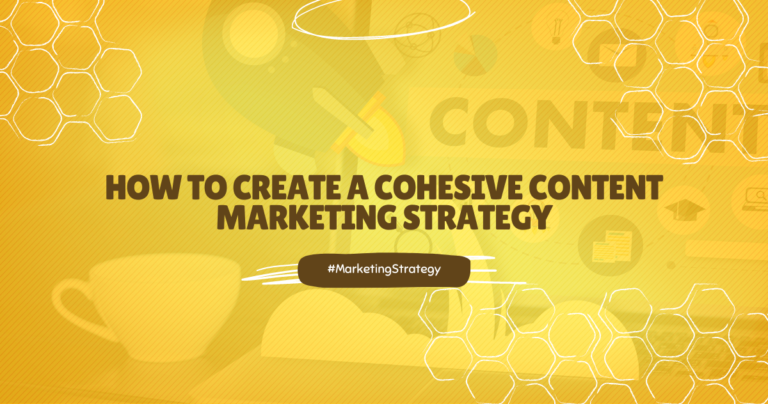
Getting your amazing content in front of the right eyes is just as crucial as creating it. Strategic content distribution isn’t about blasting your message everywhere; it’s about targeted, consistent efforts across the platforms where your audience thrives. This involves understanding where your ideal customer spends their time online and tailoring your approach accordingly. Think of it as a well-orchestrated campaign, not a shotgun blast.
Social Media Distribution Plan
A successful social media strategy requires a multi-platform approach. Here’s a plan to promote content across three popular platforms:
First, consider your audience demographics and online behavior. Are they predominantly on Instagram, engaging with visually rich content? Or are they more likely to be found on LinkedIn, focused on professional development? This understanding informs your content adaptation and posting schedule.
- Instagram: Focus on visually appealing content like infographics, short videos, and high-quality images. Use relevant hashtags, engage with comments, and run targeted ads to reach a wider audience. Consider utilizing Instagram Stories for behind-the-scenes glimpses and quick updates.
- LinkedIn: Share thought leadership pieces, industry news, and insightful articles. Participate in relevant groups, engage in discussions, and connect with potential clients and collaborators. LinkedIn is ideal for professional networking and establishing your expertise.
- Twitter: Use Twitter for quick updates, sharing links to your blog posts, engaging in industry conversations, and participating in relevant hashtags. Its short-form nature is perfect for driving traffic to longer-form content.
Email Marketing Distribution Guide
Email marketing remains a powerful tool for content distribution. A well-executed email strategy nurtures leads and keeps your audience engaged.
- Build an Email List: Offer valuable lead magnets (e.g., ebooks, checklists, webinars) in exchange for email addresses. Ensure compliance with privacy regulations (GDPR, CCPA).
- Segment Your Audience: Divide your list into segments based on interests, demographics, or engagement levels. This allows for personalized content delivery.
- Create Engaging Emails: Craft compelling subject lines, use a clear and concise writing style, and include a strong call to action (CTA). Visual elements like images can improve engagement.
- Schedule and Automate: Use email marketing automation tools to schedule emails and automate sequences based on user behavior (e.g., welcome series, abandoned cart emails).
- Analyze and Optimize: Track open rates, click-through rates, and conversions to refine your email strategy. A/B testing different subject lines and email content can significantly improve results.
Paid vs. Organic Content Promotion
Both paid and organic strategies have their place in a comprehensive content distribution plan. They offer different advantages and require distinct approaches.
| Feature | Paid Promotion | Organic Promotion |
|---|---|---|
| Reach | Wider, targeted reach | Limited reach, dependent on organic algorithms |
| Cost | Requires budget allocation | Generally cost-effective |
| Speed | Faster results | Slower, requires consistent effort |
| Control | Greater control over targeting and messaging | Less control, reliant on algorithm changes |
| Example | Facebook Ads targeting specific demographics | optimization, social media engagement |
One-Month Content Distribution Calendar
A content calendar ensures consistency and helps you plan your distribution efforts effectively. This example assumes a blog post is published weekly, along with supporting social media activity.
Note: This is a sample calendar and should be adapted based on your specific content and audience. The frequency of posting on each platform should also be adjusted to match your audience’s behavior and platform best practices. Consider A/B testing your content to determine what works best.
| Week | Blog Post Topic | Email Newsletter | |||
|---|---|---|---|---|---|
| Week 1 | The Ultimate Guide to Research | Infographic on Research | Article excerpt & link to blog post | Short tips on research | Newsletter announcing new blog post |
| Week 2 | How to Create Engaging Social Media Content | Behind-the-scenes video of content creation | Article highlighting key takeaways | Shareable quotes from the blog post | Email promoting blog post and related resources |
| Week 3 | Boosting Your Website Traffic with | Image carousel showcasing tips | Share insightful statistics and case studies | Quick tips on improving website | Email featuring a checklist related to |
| Week 4 | The Importance of Content Repurposing | Video showcasing different content repurposing strategies | Discussion post prompting engagement | Share links to previously published content | Email highlighting the value of content repurposing |
Measuring and Optimizing Performance
Content marketing isn’t just about creating and distributing; it’s about understanding what works and what doesn’t. Effective measurement allows you to refine your strategy, maximize your ROI, and ultimately achieve your content goals. By tracking key metrics and analyzing your website analytics, you can gain valuable insights into your audience’s behavior and preferences, leading to more impactful content.
Key Metrics for Evaluating Content Success
Understanding your content’s performance requires focusing on the right metrics. While many exist, three stand out as particularly crucial: website traffic, engagement metrics, and conversions. Website traffic, measured by unique visitors and page views, provides a basic understanding of your content’s reach. Engagement metrics, such as time on page, bounce rate, and social shares, reveal how effectively your content captures and holds your audience’s attention.
Finally, conversions – whether that’s newsletter sign-ups, product purchases, or lead generation – demonstrate the ultimate impact of your content on your business objectives. These three metrics offer a comprehensive view of your content’s effectiveness across different stages of the customer journey.
Interpreting Website Analytics to Understand Content Performance
Website analytics platforms like Google Analytics provide a wealth of data to interpret content performance. Analyzing metrics like page views, bounce rate, and average session duration for individual pieces of content reveals their relative success. A high bounce rate, for example, might indicate a mismatch between the content’s promise and its delivery, prompting a revision. Conversely, a high average session duration suggests engaging content that resonates with the audience.
Furthermore, examining traffic sources (organic search, social media, email marketing) reveals which channels are most effective in driving traffic to your content, allowing for optimized resource allocation. Analyzing user behavior data, such as heatmaps and scroll depth, provides insights into what parts of the content are most engaging and which areas might need improvement.
Areas for Improvement Based on Content Performance Data
Analyzing content performance data often reveals areas ripe for improvement. Three common areas include content quality, content promotion, and content targeting. Low engagement metrics (e.g., high bounce rate, low time on page) often point to issues with content quality. This could involve addressing unclear writing, poor formatting, or a lack of compelling visuals. If traffic is low despite high-quality content, it’s time to evaluate your content promotion strategy.
This might involve exploring new distribution channels, improving , or engaging in more active social media promotion. Finally, low conversion rates might signal a need to refine your content targeting. This involves ensuring your content directly addresses the needs and pain points of your ideal customer, aligning it more closely with their search intent and preferences.
Tracking Content Metrics and Their Significance
| Metric | How to Track | Significance | Example |
|---|---|---|---|
| Website Traffic (Page Views) | Google Analytics, other analytics platforms | Indicates content reach and popularity | 10,000 page views on a blog post suggests high reach. |
| Engagement (Time on Page) | Google Analytics | Measures user interest and content quality | Average time on page of 5 minutes suggests engaging content. |
| Conversions (Lead Generation) | CRM, analytics platforms | Shows the impact of content on business goals | 100 leads generated from a landing page demonstrates high effectiveness. |
| Bounce Rate | Google Analytics | Percentage of visitors who leave after viewing only one page | A bounce rate of 70% suggests significant issues with content relevance or user experience. |
Building a Sustainable Content Strategy
A sustainable content strategy isn’t about a one-off campaign; it’s about building a consistent, evolving system that delivers value to your audience over the long term. This means establishing a rhythm of creation and distribution that’s both efficient and effective, ensuring your content remains relevant and engaging. Ignoring this crucial aspect can lead to inconsistent brand messaging, wasted resources, and ultimately, a failure to achieve your marketing goals.Consistency is paramount in building a sustainable content strategy.
Regular content creation and distribution builds anticipation, strengthens brand recall, and keeps your audience engaged. Think of it like tending a garden – consistent watering and weeding are essential for healthy growth. Sporadic bursts of activity won’t yield the same results as a steady, planned approach. This consistency applies to both the frequency of your posts and the quality of your content.
Maintaining a regular schedule, whether it’s daily, weekly, or monthly, allows you to build a loyal following who expect and appreciate your regular contributions.
Repurposing Existing Content
Repurposing existing content significantly enhances efficiency and expands your reach. Instead of starting from scratch each time, you can adapt existing material for different platforms and audiences. For example, a blog post can be transformed into a series of short social media posts, an infographic, or even a short video. A webinar can be edited into shorter video clips for YouTube or TikTok.
A case study can be summarized into a compelling tweet or LinkedIn post. This approach maximizes the value of your initial investment and allows you to reach a wider audience with minimal additional effort.
Establishing a Content Creation Workflow
A well-defined content creation workflow is crucial for maintaining efficiency and quality. This involves outlining clear stages, assigning responsibilities, and setting deadlines. A typical workflow might include ideation, research, writing, editing, design, review, and finally, publication and distribution. Utilizing project management tools can help streamline this process and ensure everyone is on the same page. By establishing clear roles and responsibilities, you can prevent bottlenecks and ensure that the content creation process runs smoothly and efficiently.
Regularly reviewing and refining your workflow based on performance data will further optimize its effectiveness.
Visual Representation of a Content Piece Lifecycle
Imagine a circular diagram. At the top, we have “Content Ideation & Planning,” represented by a lightbulb sparking ideas. The next stage, “Content Creation,” is shown as a writer diligently working at a laptop. This transitions to “Content Editing & Review,” depicted by two figures collaboratively reviewing a document. Then, “Content Distribution & Promotion” is visualized as a network of arrows spreading out from a central point, representing the content reaching various platforms.
Following this, “Performance Monitoring & Analysis” is shown as a dashboard with graphs and charts displaying data. Finally, the circle completes with “Content Repurposing,” symbolized by the initial content being transformed into different formats (a short video, an infographic, social media posts) and fed back into the “Content Distribution & Promotion” stage, creating a continuous cycle. The overall color scheme is vibrant and positive, using blues, greens, and oranges to highlight the different stages.
The overall design is clean and modern, conveying a sense of efficiency and continuous improvement.
Wrap-Up
Mastering content marketing isn’t a sprint; it’s a marathon. By consistently applying these five timeless principles – understanding your audience, crafting compelling content, strategically distributing it, measuring and optimizing performance, and building a sustainable strategy – you’ll lay the foundation for long-term success. Remember, it’s an ongoing process of learning, adapting, and refining your approach based on data and feedback.
So, embrace the journey, experiment, and watch your content marketing flourish!
Top FAQs: Five Timeless Principles To Content Marketing Mastery
What if my audience is diverse and has varying interests?
Segment your audience into smaller, more homogenous groups based on shared characteristics and tailor your content to each segment’s specific needs and interests. This allows for more targeted and effective messaging.
How often should I post new content?
There’s no magic number. The ideal posting frequency depends on your resources, audience expectations, and content quality. Consistency is key; aim for a schedule you can realistically maintain.
What are some free tools for measuring content performance?
Google Analytics is a powerful, free tool offering comprehensive website analytics. Many social media platforms also provide built-in analytics dashboards.
How do I repurpose content effectively?
Transform blog posts into infographics, videos, or social media snippets. Repurpose long-form content into shorter, digestible pieces for different platforms.
